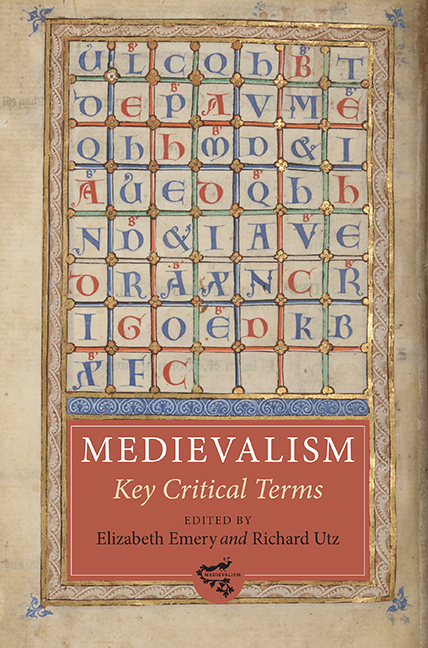Book contents
- Frontmatter
- Dedication
- Contents
- List of Illustrations
- List of Contributors
- Making Medievalism: A Critical Overview
- 1 Archive
- 2 Authenticity
- 3 Authority
- 4 Christianity
- 5 Co-disciplinarity
- 6 Continuity
- 7 Feast
- 8 Genealogy
- 9 Gesture
- 10 Gothic
- 11 Heresy
- 12 Humor
- 13 Lingua
- 14 Love
- 15 Memory
- 16 Middle
- 17 Modernity
- 18 Monument
- 19 Myth
- 20 Play
- 21 Presentism
- 22 Primitive
- 23 Purity
- 24 Reenactment
- 25 Resonance
- 26 Simulacrum
- 27 Spectacle
- 28 Transfer
- 29 Trauma
- 30 Troubadour
- Index
- Medievalism
18 - Monument
Published online by Cambridge University Press: 08 October 2022
- Frontmatter
- Dedication
- Contents
- List of Illustrations
- List of Contributors
- Making Medievalism: A Critical Overview
- 1 Archive
- 2 Authenticity
- 3 Authority
- 4 Christianity
- 5 Co-disciplinarity
- 6 Continuity
- 7 Feast
- 8 Genealogy
- 9 Gesture
- 10 Gothic
- 11 Heresy
- 12 Humor
- 13 Lingua
- 14 Love
- 15 Memory
- 16 Middle
- 17 Modernity
- 18 Monument
- 19 Myth
- 20 Play
- 21 Presentism
- 22 Primitive
- 23 Purity
- 24 Reenactment
- 25 Resonance
- 26 Simulacrum
- 27 Spectacle
- 28 Transfer
- 29 Trauma
- 30 Troubadour
- Index
- Medievalism
Summary
LATIN MONUMENTUM, “MEMORIAL,” from monere, “to remind” or “to warn,” implies an important idea with respect to both medieval artifacts/constructions and those of medievalism that draw from them: a tension between the structure as at once something of the past and something of the present, a significant public artifact with a purpose ambiguated by time. An object of once significant use may have fallen out of use, or it may remain in use: it may have less “presence” than it once had, or it may have as much or even more; that is, its emotional effects and cultural appreciation may change with time. Cultural change may have made it obsolete as more than a vague memory or feeling of things past, or it may have increased the object's value as something of more thoroughly embedded cultural significance and power. Alois Riegl wrote that what we call a monument may have been “erected for the specific purpose of keeping particular human deeds or destinies […] alive and present in the consciousness of future generations” – it has a deliberateness in its creation and persistence of artistic and historical value (70), and it may also have “commemorative value” (77) or “use value”: as a construction or a location it retains an unusual weightiness of affect. Philipp Fehl has remarked that in the monument “the work of the artist and service to the public good are most intimately joined,” though in our time “the whole idea of erecting monuments has become somewhat scandalous” (vii) – they involve enormous expense and imply dubious polemic. While Fehl notes that “the monument holds up the mirror to our fonder hopes concerning the true nature of man” (63), we must add that “[n]either revealed religion nor philosophy has taken kindly to monuments erected in praise of individuals” (50) – while they may not intend vanity, but rather an admiration for statecraft or inspiration, they may as well represent a falsification of history.
Beyond a simple call to memory, a monument may also “admonish”: it may warn against errors past or keep present our sense of mortality. It may prepare us for an Apocalypse or a Second Coming or gird us against war or social upheaval. It may recall others’ sacrifices and warn us that if we lack care, we may need to make those of our own.
- Type
- Chapter
- Information
- Medievalism: Key Critical Terms , pp. 157 - 164Publisher: Boydell & BrewerPrint publication year: 2014

